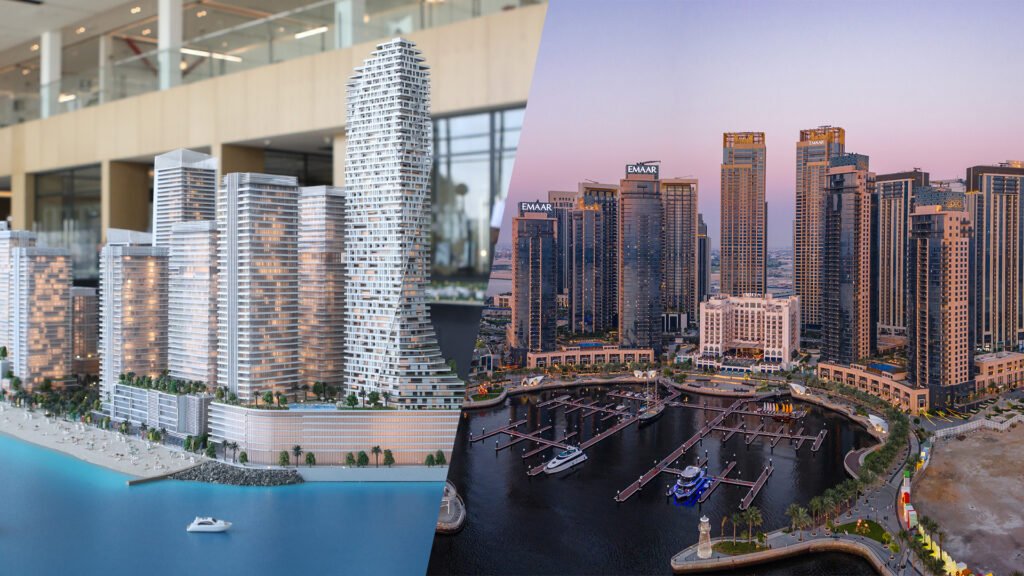
Buying property is one of the most significant financial decisions you’ll ever make — and choosing how you buy is just as important as what you buy. In today’s real estate market, especially in places like Dubai and other global hotspots, buyers are faced with two main choices: off-plan payment plans or immediate purchases.
Each option comes with its own set of advantages and potential risks, making it essential for investors and end-users alike to understand the full picture before signing on the dotted line. This article breaks down the pros and cons of both approaches, helping you make a decision that aligns with your financial goals, risk appetite, and lifestyle needs.
Before diving into pros and cons, let’s clarify what each term really means.
Off-plan properties are developments that are either under construction or in the pre-construction stage. Buyers typically make an initial down payment, followed by installments tied to the project’s construction progress.
Immediate (ready) properties, on the other hand, are completed homes or apartments available for immediate occupancy. You pay the full amount upfront (either via cash or mortgage) and can move in or rent out the property right away.
Both approaches can yield excellent returns — the key is choosing the one that matches your investment strategy and financial comfort.
Off-plan properties have become increasingly popular, especially among new investors, because of their flexible payment options and potential for capital appreciation. Developers often offer attractive payment structures that make ownership more attainable without the need for full payment upfront.
One of the biggest advantages of off-plan purchases is affordability. Buyers can secure a property with as little as 10–20% down payment. This makes real estate accessible to a wider pool of investors, especially those who may not have full capital available immediately.
Since you’re buying before the property is completed, the price is typically lower than market rates. By the time the project is finished, the value often appreciates, allowing investors to earn significant returns even before taking possession.
Developers frequently offer attractive perks such as waived registration fees, free service charges, or guaranteed rental returns for the first year or two. These incentives make off-plan purchases even more appealing.

Payment plans can be spread across several years, often linked to the construction timeline or even extending beyond handover. This helps investors manage cash flow and avoid taking large loans.
While off-plan properties are enticing, they’re not without risks.
One of the most common challenges is delay in project delivery. While reputable developers maintain strict timelines, unforeseen issues such as permit delays or financial setbacks can push completion dates.
The property market can change significantly over the construction period. If prices fall, you could end up paying more for a property than its current market value upon completion.
Since the property is still under construction, buyers don’t get to see the final product until completion. Minor design or layout changes may occur, and sometimes, the end result doesn’t fully match the original plans or marketing materials.
Financing an off-plan property can be more complicated, as most banks release funds only once certain construction milestones are met. Interest rates and approval requirements may also vary.
For buyers who prefer certainty and speed, immediate purchase options are often the go-to choice. You see what you’re buying, pay for it, and it’s yours to use or rent immediately.
The most obvious benefit — you can move in, rent out, or resell right away. This makes it a great option for end-users or investors looking for instant rental income.
Since the property is already completed, there’s no uncertainty about delays or changes. What you see is what you get, offering a higher level of security and peace of mind.
Banks are often more comfortable lending for ready properties since the asset is tangible and its value is established. This makes mortgage processing smoother and faster.
If you’re purchasing as an investment, you can start earning rental income from day one, which helps offset mortgage payments or generate profit quickly.
While immediate ownership sounds perfect, it’s not without limitations.
Ready properties usually require full payment upfront or a large mortgage, which means you need to have substantial capital available. Developers rarely offer installment plans for ready homes.
Since you’re buying at current market value, there’s less room for capital appreciation compared to off-plan investments, where early buyers benefit from price increases over time.
In some cases, ready properties might be older or have more wear and tear, leading to higher maintenance costs and renovations.
Unlike off-plan projects, ready properties rarely come with offers like fee waivers or flexible payment terms.
Here’s a simplified comparison to help visualize the key differences:
| Feature | Off-Plan Purchase | Immediate Purchase |
|---|---|---|
| Initial Payment | Low (10–20%) | High (80–100%) |
| Ownership | Upon completion | Immediate |
| Rental Income | Delayed | Immediate |
| Risk of Delay | Possible | None |
| Capital Appreciation | High potential | Moderate |
| Financing Options | Limited during construction | Easier access to mortgage |
| Flexibility in Payment | High | Low |
| Market Value at Purchase | Below market price | Current market price |
| Ideal For | Long-term investors | End-users and short-term investors |

The answer depends largely on your goals, financial situation, and timeline.
Off-plan properties generally offer higher ROI potential and lower entry costs, making them ideal for investors who can wait for capital growth. If your aim is long-term wealth accumulation and you can manage payment schedules, off-plan is a strategic choice.
Ready properties are the better option if you want to move in immediately or start earning rental income right away. The stability and transparency of knowing exactly what you’re buying is worth the higher initial cost.
Some developers now offer post-handover payment plans — a hybrid between off-plan and ready purchases. You can get the keys while still paying installments after moving in. This model provides flexibility with faster possession.
To make an informed decision, keep these points in mind:
The global real estate market is shifting toward more buyer-friendly models, with developers increasingly offering innovative financing options. In markets like Dubai, for example, off-plan projects are designed to attract investors through flexible post-handover plans and guaranteed rental yields, making them competitive against ready properties.
However, as economic stability and mortgage options expand, ready properties continue to remain strong among families, expatriates, and those looking for tangible assets without waiting.
The key lies in aligning your decision with your investment goals — whether that’s long-term capital growth, immediate returns, or a balance of both.
Choosing between off-plan payment plans and immediate purchase is not about which is “better” — it’s about which is better for you.
If you’re looking for flexibility, affordability, and potential appreciation, off-plan properties are your best bet. But if you value certainty, immediate possession, and instant returns, ready properties offer stability and simplicity.
Ultimately, a well-researched decision backed by financial planning and market insight can turn either option into a profitable and rewarding investment.
Whether you decide to buy now or invest in the future, remember — property is not just about owning real estate. It’s about building wealth, creating stability, and securing a future that matches your dreams.
Do Follow Estate Magazine on Instagram
